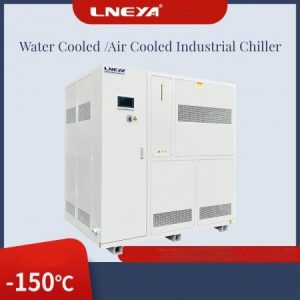Transmission powertrain cooling system with evaporator
The evaporator is one of the four major components of the refrigeration system, and it is the ultimate embodiment of the refrigeration effect and efficiency. The evaporator is generally designed and equipped by the transmission powertrain cooling system manufacturer, and the user does not need to choose. However, in order to better maintain the refrigeration system and ensure its operation, the following points should be noted:
1. The influence of liquid level on evaporation temperature. Due to the height of the refrigerant liquid column, the evaporation temperature at the bottom of the flooded evaporator is higher than the evaporation temperature of the liquid surface. The evaporation temperature of different refrigerants at different liquid levels is affected differently by the height of the static liquid. Regardless of the refrigerant, the lower the evaporation temperature of the liquid surface, the greater the influence of the hydrostatic height on the evaporation temperature. Therefore, only when the evaporation pressure is high, the influence of the hydrostatic height on the evaporation temperature can be ignored. When the evaporation temperature is low, it cannot be ignored. In other words, it becomes uneconomical to use a flooded evaporator at this time.
2. The possibility of freezing of the refrigerant. If the evaporation temperature is lower than the freezing temperature of the refrigerant, the refrigerant may freeze. When water is used as the refrigerant, theoretically, the temperature of the inner wall of the tube can be as low as possible. However, for the sake of simplicity, the temperature of the inner wall of the pipe at the outlet end of the latter process is usually kept above. For the case of brine as the refrigerant, according to the same principle, the temperature of the inner wall of the tube should be higher than the freezing temperature of the refrigerant.
3. The pressure loss of the refrigerant in the evaporator. When the refrigerant flows through the evaporator, pressure loss is caused, which will inevitably make the pressure p2 of the refrigerant at the outlet of the evaporator be lower than the pressure p1 at the inlet, thereby reducing the suction pressure of the compressor, resulting in a decline in the refrigeration capacity.
4. According to different models, the choice of evaporator is different. For example, the cooling system of the box-type small transmission powertrain uses a water tank coil type evaporator; the open type small transmission powertrain cooling system and the small screw type For transmission powertrain cooling system, shell and tube evaporator is used; for acid and alkali resistant transmission powertrain cooling system, titanium tube evaporator or stainless steel plate exchanger can be selected.
There are many options for the cooling system of the small transmission powertrain. Of course, it can be customized according to the needs of users.
Raccomandazioni correlate
-
Water cooled low-temperature circulators in the testing industry of new energy vehicles
1551The development of the new energy vehicle industry is relatively rapid. Driven by technological innovation, it is believed that the new energy vehicle industry is facing opportunities. However, with the development of the new energy vehicle indu...
Visualizza dettagli -
Recommendations for the use of integrated chip test equipment in the test process
1627From the perspective of the entire semiconductor industry, semiconductors can be divided into R & D, production, and application stages. At different stages, the role of testing is different. Control of test equipment, including test machines,...
Visualizza dettagli -
Soluzione di raffreddamento a liquido per data center LNEYA Unità di distribuzione CDU raffreddata a liquido
1929Refrigeratore a liquido per centri dati LNEYA CDU
Visualizza dettagli -
Temperature Control Soultion for Wafer Cleaning Solution in Semiconductor Industry
1912With the rapid development of semiconductor technology, the requirements for wafers are getting higher and higher, making clean wafer surfaces more and more important for the manufacturing of semiconductor devices. In the wafer manufacturing proce...
Visualizza dettagli
 Refrigeratori industriali LNEYA Produttore Fornitore
Refrigeratori industriali LNEYA Produttore Fornitore











